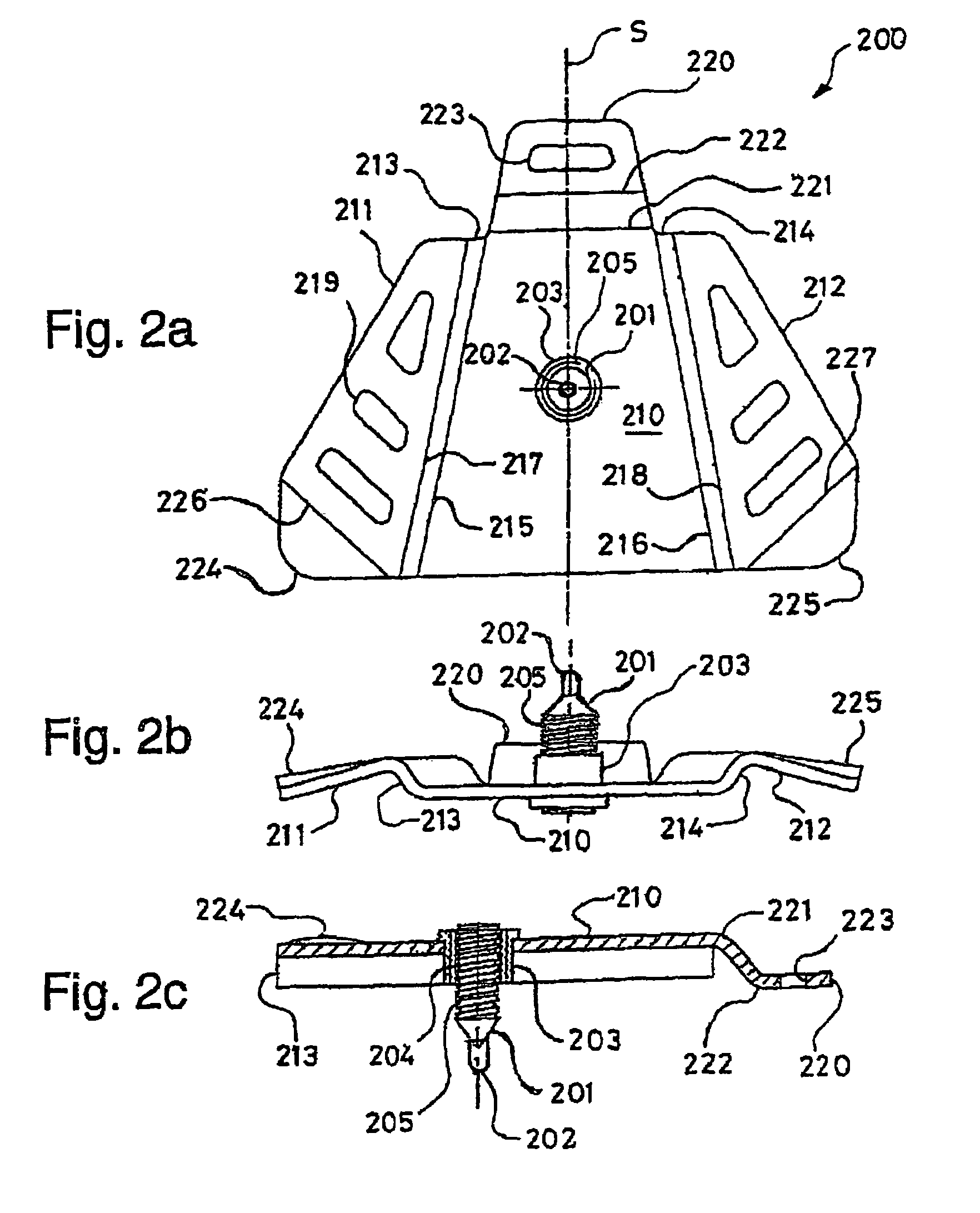Dental device for recording the position of the jaws of a patient in relation to one another by means of recording plates
a technology for recording plates and dental devices, applied in dentistry, medical science, etc., can solve the problems of less convenient and easy to see tracing, more difficult to view but easy to interpret, and less room for maneuvering during the fitting of recording plates, so as to ensure the stability of the recording. , the effect of reliable recording of dentulous patients
- Summary
- Abstract
- Description
- Claims
- Application Information
AI Technical Summary
Benefits of technology
Problems solved by technology
Method used
Image
Examples
Embodiment Construction
[0022]In the following text, indications such as above / below, inside / outside, front / behind, horizontal / vertical, transverse / sagittal and the like always relate to the orientation of the patient on whose jaw a recording plate according to the invention is arranged.
[0023]The dental device according to the invention for recording the position of the jaws of a patient in relation to one another comprises a pair of recording plates 100 and 200, of which an upper recording plate is intended to be secured on the upper jaw of the patient, and a lower recording plate is intended to be secured on the lower jaw of the patient.
[0024]The embodiment of a lower recording plate 100 shown in FIGS. 1a, 1b and 1c and the embodiment of an upper recording plate 200 shown in FIGS. 2a, 2b and 2c are each mirror-symmetric about a sagittal plane S.
[0025]As will be seen from the figures, each recording plate has a substantially planar extent and almost constant thickness. If such recording plates are made of...
PUM
 Login to View More
Login to View More Abstract
Description
Claims
Application Information
 Login to View More
Login to View More - R&D
- Intellectual Property
- Life Sciences
- Materials
- Tech Scout
- Unparalleled Data Quality
- Higher Quality Content
- 60% Fewer Hallucinations
Browse by: Latest US Patents, China's latest patents, Technical Efficacy Thesaurus, Application Domain, Technology Topic, Popular Technical Reports.
© 2025 PatSnap. All rights reserved.Legal|Privacy policy|Modern Slavery Act Transparency Statement|Sitemap|About US| Contact US: help@patsnap.com



